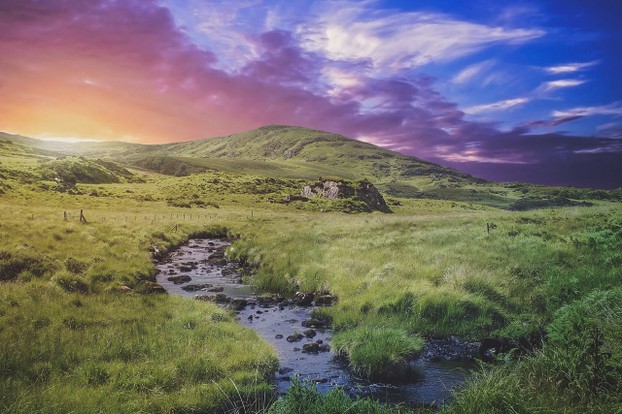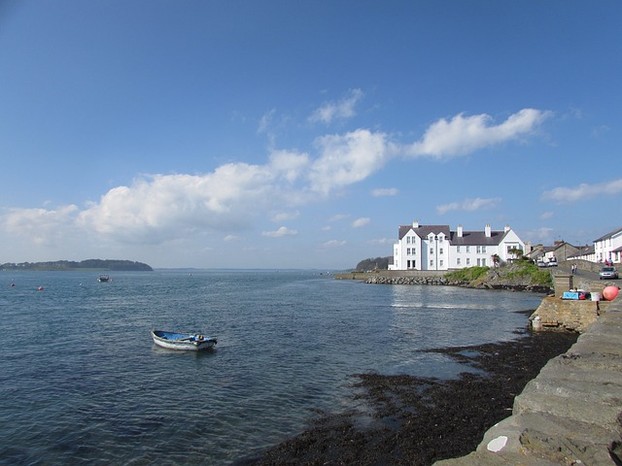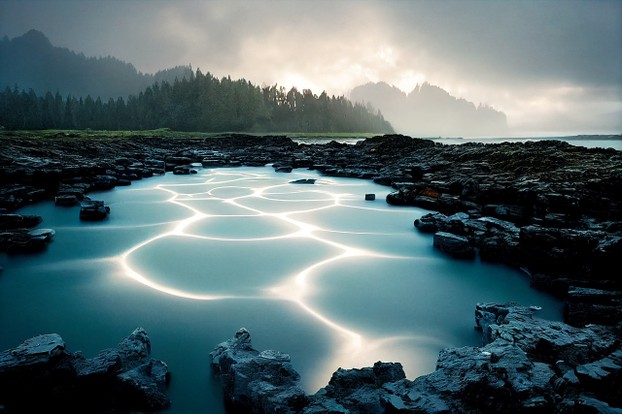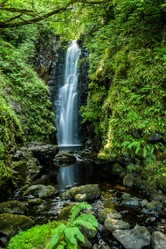My first experience of Northern Ireland was when in mid September 1969 I alighted from a bus at 10:20 pm in the border village of Belcoo, County Fermanagh, en route to a Catholic theology College two miles away in the Irish Republic. It was a clear, warm night, and I was blessed by the vision of a dark sky, unsullied by city lights, and so the Milky Way spangled the firmament above. It was my first vision of the starry heavens, and I have never forgotten it. That I am starting at the south-western corner of the province rather than in the more populous east is down to the fact that the south west is an area of which I have strong memories.It is a personal preference.
The college was on the border, just in the Republic, but it overlooked a landscape of lough and hill. The view to the north overlooked Upper Lough Macnean, an island-studded lake which is separated from Lower Lough Macnean by an isthmus. The islands seem to be drumlins, mounds of glacial material dumped by retreating glaciers. The southern border with the Irish Republic has many drumlins, though they are a phenomenon found in all glaciated areas.
The view from over the lough was of the hills of County Fermanagh. I can recall 1300 foot Belmore Mountain, a long, flat-topped limestone ridge which resembles an escarpment and is the second highest peak in Fermanagh. The low hilly country stretched north of Lough Macnean until it reaches Lough Erne, an expanse of water quite narrow in its southern stretch, but which swells into a large and beautiful lough in the northern section. It is a great lough for boating and there are islands with ancient remains there.
South West Fermanagh is overlooked by Cuilcagh, a mountain oft shrouded in mist through which the border runs. One clear, cold February day I was walking by Lower Macnean when I saw Cuilcagh, snow-capped, and perfectly reflected in the tranquil lough. But I had no camera with me, so the experience remains a treasured memory to be expressed in word pictures. Cuilcagh is good walking country, and I have fond memories of hiking across its peaty summit, in a mist. It is wild land up there. In good weather the view stretches over the lowlands of County Cavan to the south, but westward you can see the Iron Mountains, old clan O' Rourke territory. I did not know then that I would marry an O'Rourke, though she is not from that area.









 TheThousand Year Gardenon 11/26/2025
TheThousand Year Gardenon 11/26/2025
 Women of the Gospelson 10/11/2025
Women of the Gospelson 10/11/2025
 Religious Gardenson 08/25/2025
Religious Gardenson 08/25/2025
 Doctor of the Church: John Henry Newmanon 08/03/2025
Doctor of the Church: John Henry Newmanon 08/03/2025



Comments
No one decided. The custom simplybarose.
Thank you!
English Wikipedia attributes respective heights of 3,209 feet (978 meters) to England's Scafell Pike and 3,560 feet (1,085 meters) to Wales' Snowdon.
The aforementioned source attributes a height of 3,407 feet (1,038.6 meters) to Carrauntoohill. The Irish peak therefore belongs between Scafell and Snowdon.
Who decides that challenge as Three Peaks instead of Four Peaks?
(Might the Irish not want ;-D mountaineer and mountaineer-admiring ;-D crowds?)
The highest point in Britain is 4414 feet, Ben Nevis. It is part of the Three Peaks challenge, which combines the top peaks of England, Scotland and Wales. In Ireland the highest peak is Carauntohil, there are no high peaks in Cornwall.
Jordan Romero (born July 12, 1996) climbed the highest peaks of 7 continents before age 16. He commenced climbing the highest peaks in the United States 2008-2012.
Online sources discuss climbing Cuilcagh.
Might there be a smaller-scale equivalent throughout the British Isles of mounting highest peaks?
Would there be famous highest peaks in Cornwall, England, Ireland, Scotland, Wales?
In do not think that many of them give it much thought. Avfew may be interested.
English Wikipedia derives Neagh from Loch nEachach ("Eachaidh's lake").
It in turn links Eachaidh ("all-father, great father, horseman") to alternative names for the Dagda ("good god, shining god"), identified as chief and leader of the gods.
Might this Gaelic background be something that is familiar, remembered and respected by area inhabitants today?
I am open minded on the matter, as to pass judgmentbon the issue I would have to be a
Gaelic scholar, but though I have some Gaelic My command of it is not sufficient. . I do kNow that erne is a Gaelic word for a heron.
Online sources offer a number of etymologies for Loughs Erne and Neagh.
What would be an etymology that you'd accept for them?
Strangford Lough is a sea inlet,but Loughs Neagh and Erne are inland lakes. Carlingford Lough is a broad inlet, more like a bay, unlike Strangford, which is narrow.
excellent images, and the advertised Rick Steves product, cannot tell if it is a book or DVD, must be great, for his material on television is excellent.